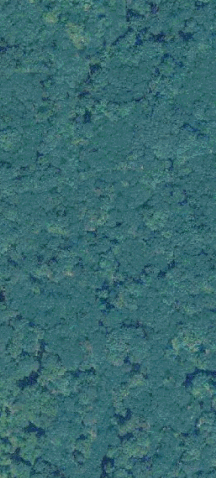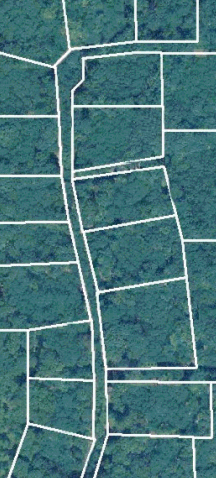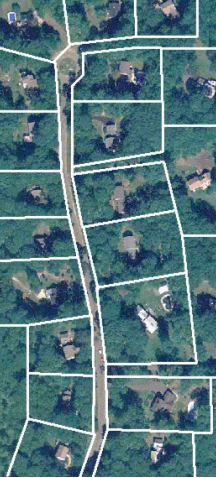Terms like forest fragmentation, parcelization or parcellation can mean different things to different people. We want to be sure that you understand what our forest fragmentation result shows and what we mean when we say forest fragmentation.
In our definition of forest fragmentation, we are talking about “the process of dividing large tracts of contiguous forest into smaller isolated tracts surrounded by human modified environments” (Society of American Foresters). That is, removing tree cover and replacing it with another, non-forested, land cover.
This is different than parcelization or parcellation which refers to “changes in ownership patterns whereby large forested tracts are divided into smaller parcels” (Yale Forest Forum Review). One can safely assume that parcellation does not always result in fragmentation, but does increase the likelihood that the forest will become fragmented (i.e. the construction of roads and structures).
Below are three images that demonstrate an intact forest, parcelizaton and fragmentation. The left image shows an area that is completely forested, thus the forest is not fragmented. Also, let’s assume it is owned by one person, so it is not parceled either. The center image shows the same area which, again, is completely forested. The white lines represent property boundaries and each parcel has a different land owner. Not fragmented, but parceled. The right image shows the same area that is still parceled and also fragmented due to a road and houses that break up the continuous forest.
 |
 |
 |
Not parceled and not fragmented |
Parceled but not fragmented |
Parceled and fragmented |